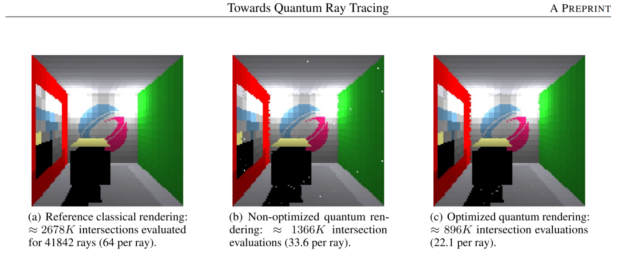We all know that turning ray tracing on radically reduces performance, so any help in the performance department is not only welcomed, it's begged for.

A team of researchers from the UK, US, and Portugal have suggested that there's some huge untapped performance using a hybrid of classical ray tracing algorithms with quantum computing. Ray tracing workloads that were boosted by up to 190% by quantum computing.
How? By limiting the amount of computations needed by each individual ray. The researchers demonstrated this by rendering a small, 128x128 ray traced image in three approaches: classical rendering, non-optimized quantum rendering, and optimized quantum rendering.
- Classical rendering: 2,678 million ray intersections (64 per ray)
- Unoptimized quantum rendering: 1,366 million ray intersections (33.6 per ray)
- Optimized quantum rendering: 896 thousand intersections (22.1 per ray)
All of the fluff aside, this isn't going to help you with your ray tracing performance in games. No one has a quantum computer at home, and even if you did... it's not like it's going to be some ray tracing add-in card that acts like a PhysX accelerator.
NVIDIA already has RT cores on the GPU, but I don't think we'll see a quantum computer on the GPU any time soon. Or maybe we will, hey Jensen?


